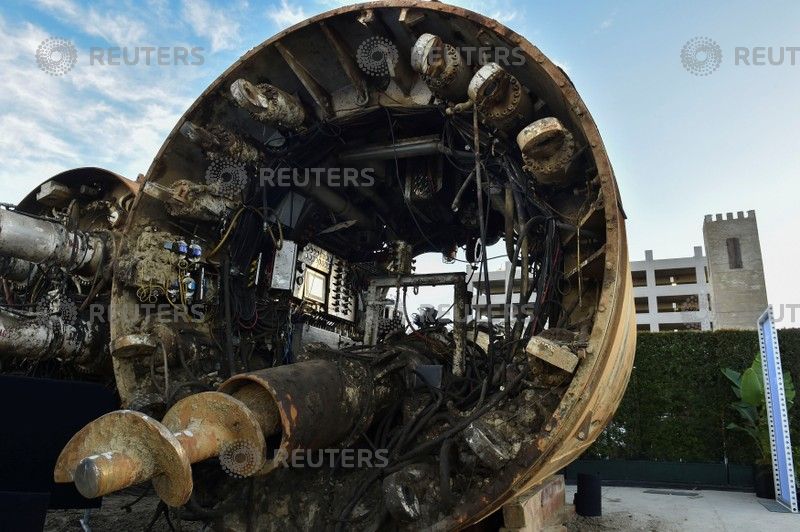Billionaire entrepreneur Elon Musk made a brief public appearance late on Tuesday to unveil the first tunnel completed by the underground transit venture he launched two years ago as an ambitious remedy to Los Angeles' infamously heavy traffic.
LOS ANGELES: Billionaire entrepreneur Elon Musk made a brief public appearance late on Tuesday to unveil the first tunnel completed by the underground transit venture he launched two years ago as an ambitious remedy to Los Angeles' infamously heavy traffic.
But contrary to some of his own hype from several months ago, free rides were not part of the grand opening.
In a 30-minute presentation carried by live webcast, Musk touted the newly finished 1.14-mile (1.83 km) tunnel segment as a breakthrough in low-cost, fast-digging technology being pioneered by his nascent tunneling firm, the Boring Company.
Musk has advertised the proof-of-concept tunnel as a first step toward developing a high-speed subterranean network capable of whisking vehicles and pedestrians below the "soul-destroying" street traffic of America's second-largest city at up to 150 miles per hour. But such a system has a long way to go.
The new tunnel was excavated along a path that runs not through Los Angeles but beneath the tiny adjacent municipality of Hawthorne, where Musk's Boring Company and his SpaceX rocket firm are both headquartered.
Musk, best known as head of the Tesla Inc electric car manufacturer and energy company, launched his foray into public transit after complaining on Twitter in December 2016 that L.A.'s traffic was "driving me nuts," promising then to "build a boring machine and just start digging."
In May, the company gave the world a preview of the Hawthorne tunnel, posting a fast-forward video of its interior shot by a camera traveling the length of the cylindrical passageway, which measures about 12 feet (3.7 m) in diameter.
On Tuesday, Musk put the total price tag for the finished segment at about $10 million, including the cost of excavation, internal infrastructure, lighting, ventilation, safety systems, communications and a track.
By comparison, he said, digging a mile of tunnel by "traditional" engineering methods costs up to $1 billion and takes three to six months to complete.

Subscribe or renew your subscriptions to win prizes worth up to RM68,000!






